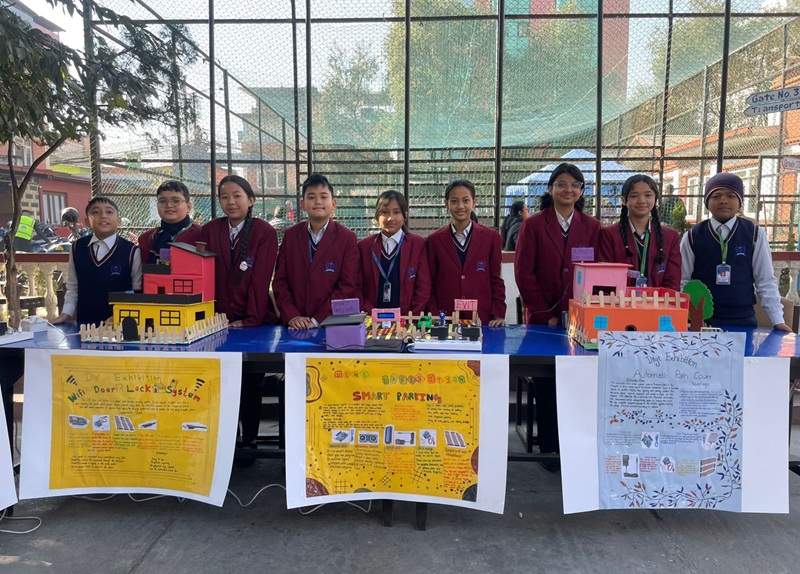Traffic Police to Honor Civilians for Rescuing Accident Victims: A New Era for Road Safety
Kathmandu Traffic Police
24th August 2025, Kathmandu
In a significant move to improve road safety and encourage community involvement, the Kathmandu Valley Traffic Police Office has announced it will provide special recognition to civilians who rescue injured individuals in road accidents.
Kathmandu Traffic Police
This initiative, revealed by Senior Superintendent of Police (SSP) Nawaraj Adhikari, the Chief of the Kathmandu Valley Traffic Police Office, aims to create a culture of responsibility and bravery among citizens.
The announcement was made during a panel discussion on “Roads and Transportation” at the NADA Auto Show 2025 in Bhrikutimandap, Kathmandu, an event that brought together key stakeholders from the transportation and automobile sectors.
SSP Adhikari noted that preparations are currently underway to implement this new system, which is expected to be launched soon. This policy is a direct response to the hesitation many people feel when considering helping at an accident scene.
The fear of legal trouble or other complications often discourages potential rescuers, despite the critical need for immediate aid. By formally recognizing these Good Samaritans, the traffic police hope to build public confidence and increase the number of people willing to assist accident victims, potentially saving countless lives.
A Collaborative Approach to Traffic Management
During the discussion, SSP Adhikari emphasized that effective traffic management is a shared responsibility.
He stated that a smooth and safe traffic environment can only be achieved if all parties—including public transport drivers, heavy equipment operators, private vehicle owners, transport entrepreneurs, and automobile businesses—work together and adhere to traffic regulations.
This holistic view acknowledges that traffic management extends beyond law enforcement and requires cooperation from everyone who uses and operates on the roads.
The panel discussion, moderated by Ekraj Subedi, Advisor Editor of Nepal Auto Dot Com, served as a platform for various stakeholders to voice their perspectives and challenges.
Kuber Nepali, Executive Director of the Urban Public Transport Authority, highlighted his organization’s establishment and its readiness to begin full operations to manage transportation across urban areas.
He expressed a commitment to collaborating with automobile businesses to improve urban transport management in the future.
Addressing Challenges and Fostering Cooperation
The discussion also shed light on the challenges facing the transportation and heavy equipment sectors. Umakant Sharma, President of the Nepal Heavy Equipment Entrepreneurs’ Federation, shared that the sector is grappling with issues stemming from the current economic situation.
He mentioned ongoing discussions with government bodies and stakeholders to resolve these problems and called for cooperation from traffic police and other authorities on critical issues like taxation, parking, and transportation logistics.
This collaborative dialogue underscores the importance of public-private partnerships in overcoming systemic hurdles.
Prakash Kapuri, an Executive Committee Member of the NADA Automobiles Association of Nepal and Chairman of the Provincial Coordination Committee, pointed out that NADA’s scope goes beyond just automobile traders.
It includes entrepreneurs involved in mass transportation with large vehicles. He noted NADA’s consistent efforts in running public awareness campaigns on road safety, highlighting their commitment to expanding these initiatives to various regions in the future.
The Path Forward: Safer and More Organized Roads
The panel discussion concluded with a consensus that such forums are vital for making roads and transportation in Kathmandu safer and more organized. The initiative to recognize civilian rescuers is a step toward building a more compassionate and responsible community.
It is anticipated that this focus on a collective, collaborative approach—involving not just law enforcement but also businesses, organizations, and the general public—will lead to meaningful and sustainable improvements in road safety.
By encouraging people to step up in emergencies and fostering better communication among all stakeholders, Kathmandu’s roads are on a promising path toward becoming more secure for everyone.
For more: Kathmandu Traffic Police








